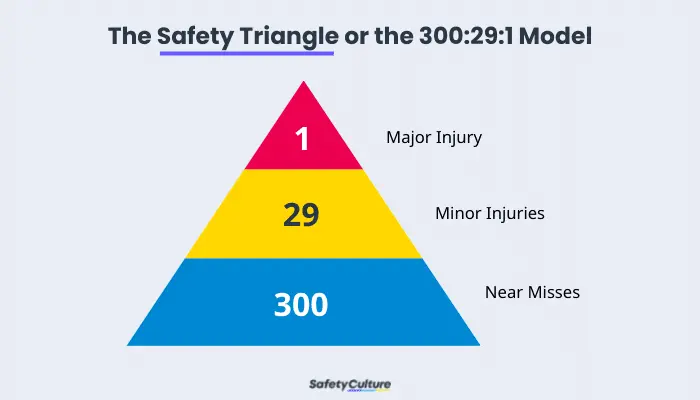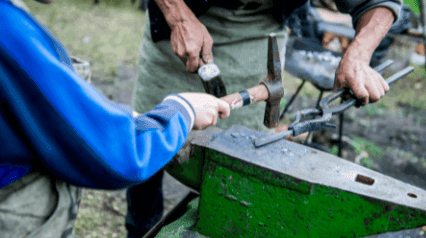What are Unsafe Work Practices?
Unsafe work practices are actions, intended or not, that could result in accidents, injuries, or even death to the worker/s in the workplace. In order to protect workers from being harmed while at work, employers must comply with the Occupational Safety and Health Administration (OSHA) law and regulations. Some of these regulations include: providing the worker with a safe place to work. However, workplace accidents, and other types of incidents, do not happen because of the present hazards in the surroundings alone. In fact, anyone, no matter how skilled or trained, can commit safety mistakes in the workplace.
Human Failures
Human factors can be a key contributor to an accident. According to the Health and Safety Executive (HSE), “analysis of accidents and incidents shows that human failure contributes to almost all accidents and exposures to substances hazardous to health.” HSE identified two main types of human failure. They are: (1) human error, and (2) violations. A human error is an action that was not intended or was inadvertent, while violations are intentional acts of breaking the rules, disregarding practices, or doing the wrong practice willfully. Violations are also known as instances of non-compliance.
Dangerous States of Mind
According to Safe Start International, there are four common States of Mind that cause, or contribute to human failures, namely: Rushing, Frustration, Fatigue, and Complacency. These states of mind influence the actions of workers in the workplace, resulting in human failures.
- Rushing–a state of being in a hurry, resulting in errors in judgement or decisions
- Frustration–this can be simply defined as a worker having a “bad day” or low morale in the workplace, resulting in distraction
- Fatigue–a state of feeling tired, mentally or physically
- Complacency–a mentality wherein an individual believes that “it (accident) won’t happen to me”
The Safety Triangle
In the 1930’s, William Herbert Heinrich, the father of safety published theories about safety and health in the workplace. One of these theories became known as the Safety Triangle, also known as the Safety Pyramid, the Heinrich Law, or the 300:29:1 theory.

The Safety Triangle or the 300:29:1 Model
300:29:1
For every 300 unsafe behaviors being committed in the workplace, 29 minor injuries happen and 1 serious or fatal injury happens, according to the 300:29:1 theory. Despite the fact that the model’s ratio is often questioned, the point of this theory is that unsafe behaviors or practices will result in at least one major accident.
10 Common Unsafe Work Practices
Here are the most common unsafe work practices that workers must avoid:
1. Overtime
It is a common practice for employers to require employees to work overtime. However, this practice can cause many problems, including excessive fatigue. It takes a lot of effort to stay awake during long hours of work. If employees work too much overtime, they will get tired and the chances of accidents occurring will increase.
2. Lack of Proper Personal Protective Equipment (PPE)
PPE is used to protect employees from injuries. However, there are some employers who do not provide proper PPE to their employees. This practice puts the employee’s life at risk. For instance, in a construction site, workers usually use hard hats, goggles, gloves, and other protective gear. Sometimes, employers do not provide these items for their employees. Instead, they force them to work without proper PPE. This practice can lead to severe injuries or death.
3. Unqualified Personnels Working with Dangerous Tools
Using dangerous tools can be risky. If the assigned workers are not trained properly, they may injure themselves or others.
4. Poor Lighting Conditions
Sometimes, employers fail to provide proper lighting conditions for their employees. This practice puts the employees’ health at risk. For example, if the work area has poor lighting conditions, it may make your eyes tired and your vision may become blurry. This can lead to accidents.
5. Improper Workstation Layout
Well-designed workstations can improve the performance and productivity of employees. A poor layout of controls and equipment, however, can lead to confusion if they are not properly positioned.
6. Ignoring Safety Symbols or Signs
Safety signs are placed to inform workers and visitors of the present hazards. Ignoring these reminders can cause both minor and major injuries.
7. Poorly Maintained Equipment
Equipment and other tangible assets used in the workplace can be prone to fail if they are not maintained properly or routinely checked.
8. Poor Training and Poor Supervision
Errors or failures are not committed by workers alone. Even the managerial staff can fail. Everyone needs proper training on the processes, procedures, or steps they must comply with.
9. Not Using Proper Equipment, Tools, or Machinery
Some tasks need specific equipment or tools to properly execute them. Using tools intended for a specific use for other purposes is dangerous.
10. Excessive Workloads on a Single Person
There are instances wherein employers tend to give tasks that keep on piling up to a particular employee. This could result in overtime, fatigue, or rushing.
Improve your EHS Management
Cultivate a safe working environment and streamline compliance with our EHS solutions.
Explore nowHow Safety Training Can Help Prevent Unsafe Work Practices
By reinforcing your policies and procedures through training, workers will be better equipped with the knowledge and skills needed to identify and mitigate potential hazards before they even escalate into major safety concerns.
Through consistent and comprehensive safety training, they’ll also be able to take the appropriate measures to prevent accidents from occurring and avoid unsafe work practices. This can lead to a mindset shift, where your policies and procedures become a natural part of their work habits, creating a safer work environment for everyone.
SafetyCulture (formerly iAuditor)’s Training is a tool you can use to improve and standardize your process of creating and deploying safety training programs in your organization. With Training’s features like analytics, reporting, and tracking, ensure everyone is aligned with the best practices for any process or task.
Enhance the Safety Culture in your Workplace with SafetyCulture
If safety policies in the workplace are not enforced, implemented, and assessed properly, then they will be considered pointless over time. Reduce the likelihood of an accident happening in your workplace by empowering your team with SafetyCulture, the best digital app used across industries for safety, quality, and training.
To prevent accidents and injuries in the workplace, SafetyCulture can help you:
- Perform safety inspections in a more efficient approach using customizable safety checklists.
- Determine whether or not your workers are wearing the proper PPE and are correctly complying with safety standards using the Job Safety Analysis Checklist.
- Assign corrective actions to failed areas after an assessment or inspection is done.
- Conduct safety training in a more convenient and efficient way among your workers using Training.



